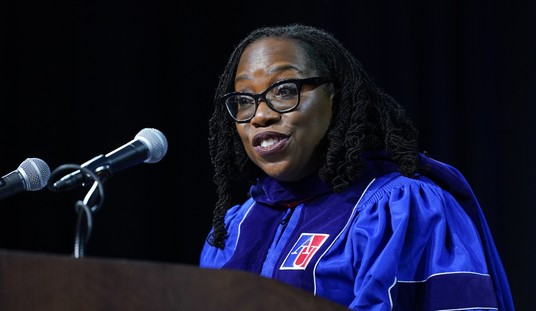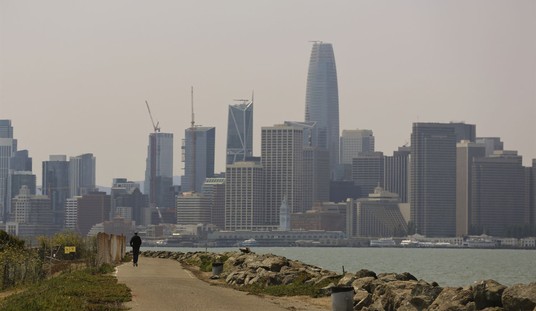Will we have to do this all over again at Christmas? Allahpundit mentioned this last night in a roundup but it’s worth a closer look, at least for the economic implications. Dr. Robert Redfield warned that we could wind up facing tough decisions this winter, not so much because the coronavirus would get worse but because we might have two epidemics to deal with.
Well, he can just rock me to sleep tonight, then:
The director of the CDC is warning that a second wave of coronavirus next winter could be even worse than the first. This, as the FDA approves the first at-home COVID-19 testing kit. @tomcostellonbc has the latest. pic.twitter.com/eJnxcRmypY
— TODAY (@TODAYshow) April 22, 2020
“There’s a possibility that the assault of the virus on our nation next winter will actually be even more difficult than the one we just went through,” CDC Director Robert Redfield said in an interview with The Washington Post. “And when I’ve said this to others, they kind of put their head back, they don’t understand what I mean.”
“We’re going to have the flu epidemic and the coronavirus epidemic at the same time,” he said.
Having two simultaneous respiratory outbreaks would put unimaginable strain on the health-care system, he said. The first wave of covid-19, the disease caused by the coronavirus, has already killed more than 42,000 people across the country. It has overwhelmed hospitals and revealed gaping shortages in test kits, ventilators and protective equipment for health-care workers.
In a wide-ranging interview, Redfield said federal and state officials need to use the coming months to prepare for what lies ahead. As stay-at-home orders are lifted, officials need to stress the continued importance of social distancing, he said. They also need to massively scale up their ability to identify the infected through testing and find everyone they interact with through contact tracing. Doing so prevents new cases from becoming larger outbreaks.
It’s certainly possible, but is it probable? Redfield bases this warning on two assumptions: that the coming flu season will be as bad as possible, and that we will have not made any progress in treating or preventing the spread of COVID-19. Don’t forget that we were in the middle of flu season when COVID-19 hit the US — closer to it than we thought, as we’ll note in a moment. They overlapped so significantly that we mistook it as part of the flu here at first. The next influenza strain might be worse, or it might not be as bad, too.
What about our status with COVID-19? It might be as weak as it is now, too, but that would be highly disappointing, to say the least, and fairly unlikely. For one thing, we will have plenty of testing in place by then — probably so in a month or less, and that production won’t slow down this year, either. We’re just a few weeks before an FDA-authorized nasal swab diagnostic test for home use will become widely available. Some of the testing capacity issues are in the distribution channel and not production, as FDA commissioner Stephen Hahn explained this morning:
"The whole taskforce set of doctors is concerned about the second wave… that's why we have built into the plan the surveillance mechanisms to look for the respiratory illnesses and then do the appropriate testing at that time" — @SteveFDA on CDC warning of second wave of virus pic.twitter.com/jVzWEyNKYw
— CBS This Morning (@CBSThisMorning) April 22, 2020
Other production channels for tamping down the spread are also going to keep expanding as the year progresses. We will have much better capacity for PPE in hospitals and clinics, for instance, as well as ventilators for the worst cases. Face masks for personal use will improve as health-care workers get their inventory stocked up too. All of that will slow down the spread (of both flu and COVID-19, actually) even apart from the development of therapeutic remedies and hopefully a clinically proven vaccine, although expecting the latter before Christmas really does require a belief in Santa Claus.
Plus, we are seeing data that COVID-19 might be more prevalent in the population now than previously thought. It’s nowhere near prevalent enough to confer “herd immunity,” but it does mean future waves might be more limited. The CDC has now identified two COVID-19 cases in Santa Clara from early February as the first US deaths from the disease, and neither of those victims had any known vectors to travel in China. They both appear to be cases of community spread, as NBC notes in its report:
Two coronavirus-related deaths confirmed in Northern California’s Santa Clara County from early February are the earliest known deaths from the virus in the US.
The deaths were from February 6 and February 17 — up to three weeks before the first known US death in Kirkland, Washington, on February 29.
That’s a good news/bad news development. The bad news is that we may continue to see more community spread for a while because we might not have identified the spreaders quickly enough. However, it also means that even with community spread beginning a month earlier than assumed, we didn’t see a sudden explosion of excess mortality. That suggests that the mortality rate might be lower than thought — but almost certainly still far more lethal than most if not all influenza strains, and still more serious even for the recovered.
The purpose of the “shutdown” strategy was to get all the pieces in place to deal with a pandemic. We will have that shortly, perhaps within weeks, and we will also hopefully have the benefit of warmer weather to tamp down transmission even further. If what Redfield says is true or even probable, then we need to reopen ASAP to generate enough economic activity to produce the rest of what we’ll need over the winter and tide us over while people increase social-distancing techniques over the Christmas season and winter. We need to start making the engines of American ingenuity work for us again to prepare for a long winter — but hopefully a manageable one, now that we’re preparing for it rather than getting blindsided by this pandemic.








Join the conversation as a VIP Member